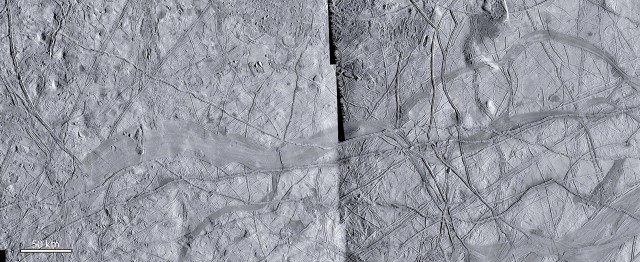Europa’s icy shell may undergo plate tectonics
Ars Technica » Scientific Method 2014-09-08

The Solar System is ancient. Many of the bodies in it show their age with impacts that date back to the violent early days of the Late Heavy Bombardment and craters embedded in craters. Earth is different in that plate tectonics and other geological processes constantly remake its surface. But even the Earth looks pretty old compared to Jupiter's moon Europa. Based on the number of impacts present, Europa looks to be less than 100 million years old.
A variety of evidence indicates that Europa's dynamic surface comes from the fact that the moon has a thin crust of ice above a large sub-surface ocean. Geysers and other features also suggest that the moon is geologically active. But the precise mechanism that drive the surface remodeling have remained uncertain. Now, two researchers are proposing that the mechanism is the same as it is on Earth: plate tectonics.
The proposal is put forth by the University of Idaho's Simon Kattenhorn and Johns Hopkins' Louise Prockter, and it was released by Nature Geoscience yesterday. The authors note the clear evidence of remodeling and point out that we've already identified a source of new ice reaching the surface: some features on the moon's surface appear to be sites of spreading, analogous to a mid-ocean ridge. But assuming the moon hasn't been growing larger, there must be some process that removes old ice from the surface.
Read 10 remaining paragraphs | Comments